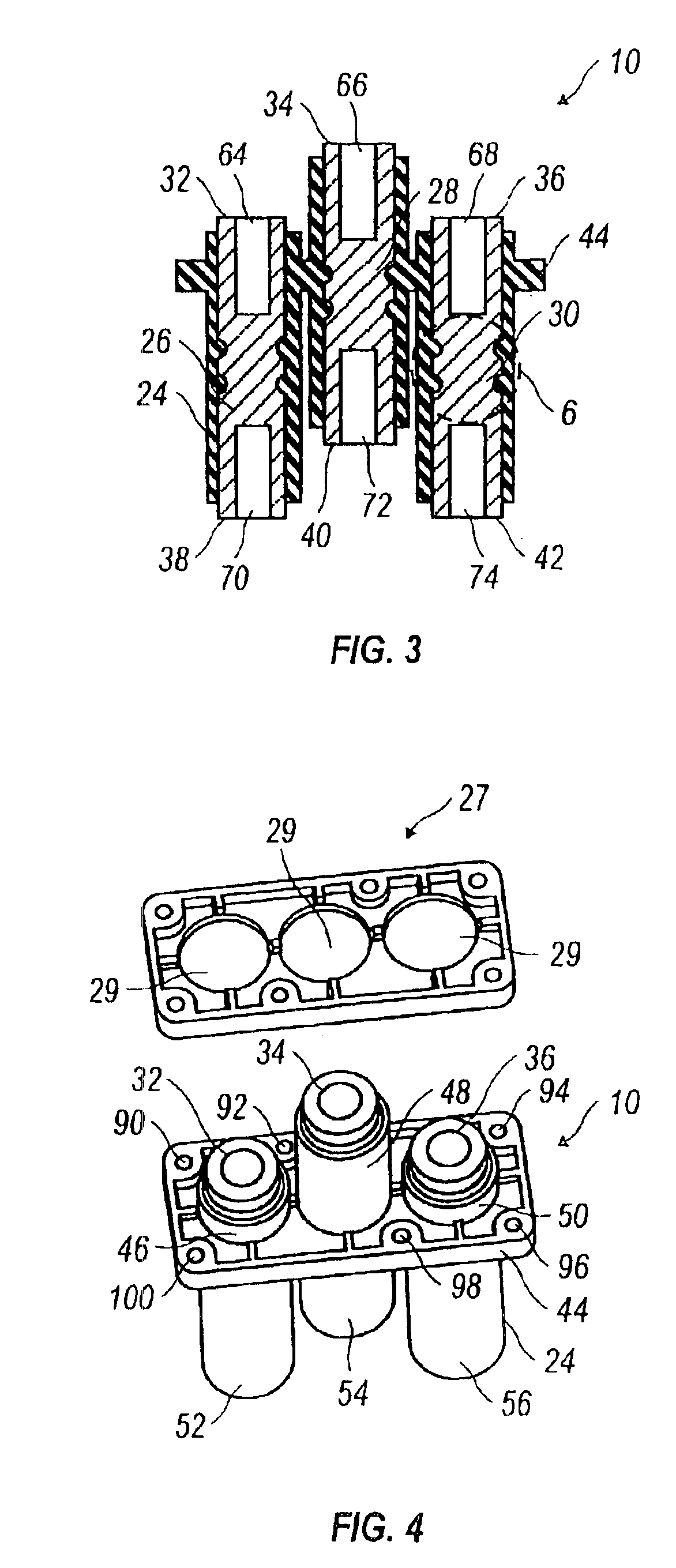Three-phase connector for electric vehicle drivetrain
a technology of three-phase connectors and electric vehicles, applied in the direction of coupling contact members, coupling device connections, conductor screwing into other, etc., can solve the problems of large package, large effort required for assembly, and inability to simply thread wires, so as to reduce the size and cost of the part, the effect of reducing the effort required
- Summary
- Abstract
- Description
- Claims
- Application Information
AI Technical Summary
Benefits of technology
Problems solved by technology
Method used
Image
Examples
Embodiment Construction
[0019]An embodiment of the present invention will now be described in detail with reference to the accompanying drawings wherein like reference numerals will be used to describe like components. Referring to FIG. 2, the three-phase connector 10 makes the connection between the inverter 12 and the electric motor 14. Disposed between the three IGBT's 16 of the inverter 12 and the three-phase connector 10 is a busbar (not more particularly shown), which connects the IGBT's 16 of the inverter 12 to the three-phase connector 10. The three-phase connector 10 sits on a casting 18, which is the housing for the electric motor 14, and the inverter 12 also has a housing or casting 20. The task of the three-phase connector 10 is to get the three-phase current through those two castings 18, 20 to the windings for the electric motor 14.
[0020]Referring to FIGS. 2-4, the three phases are isolated at least in part with a nylon over molding 24 of the three-phase connector 10, which covers three metal...
PUM
 Login to View More
Login to View More Abstract
Description
Claims
Application Information
 Login to View More
Login to View More - R&D
- Intellectual Property
- Life Sciences
- Materials
- Tech Scout
- Unparalleled Data Quality
- Higher Quality Content
- 60% Fewer Hallucinations
Browse by: Latest US Patents, China's latest patents, Technical Efficacy Thesaurus, Application Domain, Technology Topic, Popular Technical Reports.
© 2025 PatSnap. All rights reserved.Legal|Privacy policy|Modern Slavery Act Transparency Statement|Sitemap|About US| Contact US: help@patsnap.com



